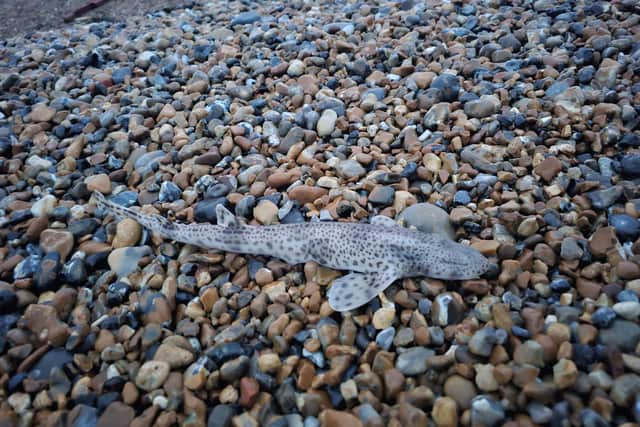Several catshark have been spotted washed up on Seaford beach
and live on Freeview channel 276
According to The Wildlife Trust, they are highly common around the UK and live close to the seabed in shallow waters down to 100m deep. They sometimes wash up dead on beaches after storms, but you're most likely to come across one of their egg cases.
Known as mermaid's purses, shark (and ray and skate) egg cases are a good indicator of what species are breeding nearby. The small-spotted catshark has a small egg case (5-7cm) with curly tendrils at each corner.
Advertisement
Hide AdAdvertisement
Hide AdCharlotte Owen, Conservation Officer at Sussex Wildlife Trust, said: “This is a Small-spotted Catshark, the most common shark in UK seas. Adults can reach a length of 80cm and are harmless to people, feeding mainly on crabs, cockles and whelks on the seabed.


"They live in shallow water and sadly it’s not unusual to find them washed up dead on beaches occasionally, especially after stormy weather, and sometimes they are casualties of fishing bycatch. Their egg cases or ‘mermaid’s purses’ are often found on Sussex beaches – look out for rectangular, leathery capsules about 5cm long, with curly tendrils in each corner.”
This catshark has other common names such as 'rough hound', 'lesser spotted dogfish' and also 'rock salmon', under which name it sometimes appears on the menu in fish and chip shops. Dogfish and catshark are the same animal!
The small-spotted catshark is identified by their very rough, pale cream skin, large dark cat-like eyes and a small mouth.